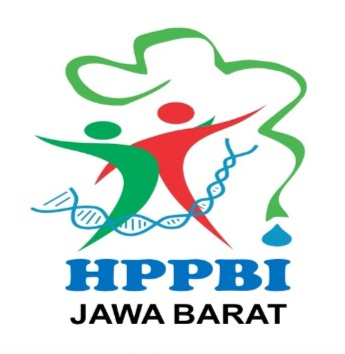Pteridophyta in the Puncak Gaduang Area, Lubuk Basung, Agam Regency as a Learning Media for Plantae Materials
Abstract
Ferns (Pteridophyta) are plants that can live easily in various habitats, both epiphytic, terrestrial and aquatic. The Puncak Gaduang Lubuk Basung area of Agam Regency is generally located in a lowland area, with the condition of the land having changed from hills to plantations and a place for taking soil for making bricks, but many types of ferns grow and develop in this area. The purpose of this study was to determine the types of ferns found in the Puncak Gaduang area, Lubuk Basung, Agam Regency and produce a valid herbarium. The method used in this study is a survey method with field observations first in taking ferns. The sampling technique is exploration, and the 4D model is used for the herbarium. The results of the study found 24 species of ferns consisting of 10 families, 4 orders and 2 classes. The validity test on the herbarium is included in the valid category. It can be concluded that and the learning media in the form of a herbarium was suitable for use as a learning medium in schools.
Keywords
References
Apriyanti, N., Jaya Santri, D., & Madang, K. (2017). Identifikasi Tumbuhan Paku (Pteridophyta) dan Kekerabatannya di Kawasan Air Tejun Curup Tenang Bedegung Kecamatan Tanjung Agung Kabupaten Muara Enim. Jurnal Pendidikan Biologi, 5(November), 116.
Arini, D. I. D., & Kinho, J. (2012). The pteridophyta diversity in Gunung Ambang Nature Reserve North Sulawesi. Info BPK Manado, 2(1), 17–40.
Aryati, A. (2021). The Effectiveness of The Plant Tour Project Model PJJ 3 in One to Increase Statistical Literature Ability of High School Students on Plant Diversity. Journal Of Biology Education Research (JBER), 2(2), 74–85. https://doi.org/10.55215/jber.v2i2.4873
Ayatusa’adah, A., & Dewi, N. A. (2018). Inventarisasi Tumbuhan Paku (Pteridophyta) Di Kawasan Kampus Iain Palangka Raya Sebagai Alternatif Media Pembelajaran Materi Klasifikasi Tumbuhan. Edu Sains: Jurnal Pendidikan Sains & Matematika, 5(2), 50. https://doi.org/10.23971/eds.v5i2.729
D. Mamu, H., Mardin, H., Bunga Pagalla, D., Mustaqimah, N., & Fajryani Usman, N. (2022). Introduction of Herbarium and Identification of Plants Based on School Environments in MTs. Negeri 2 Gorontalo Regency. Journal of Applied Community Engagement, 2(1), 40–48. https://doi.org/10.52158/jace.v2i1.343
da Silva, V. S., Cândido, A. C. da S., Muller, C., Laura, V. A., Faccenda, O., Simionatto, E., Hess, S. C., & Peres, M. T. L. P. (2011). Phytotoxic potential of Dicranopteris flexuosa (Schrad.) Underw. (Gleicheniaceae). Acta Botanica Brasilica, 25(1), 95–104. https://doi.org/10.1590/S0102-33062011000100012
Dahlia, & Janiarli, M. (2021). The Effectiveness of Herbarium as a Learning Medium on Compound Leaf Material for Students’ Achievement in Biology. Proceedings of the International Conference on Educational Sciences and Teacher Profession (ICETeP 2020), 532(532), 114–118. https://doi.org/10.2991/assehr.k.210227.019
Dikrullah, D., Rapi, M., & Jamilah, J. (2018). Pengembangan Herbarium Book Sebagai Media Pembelajaran Biologi Pada Mata Kuliah Struktur Tumbuhan Tinggi. Jurnal Biotek, 6(1), 15. https://doi.org/10.24252/jb.v6i1.4426
Fatonah, C. N., Ningtias, R. A., Pertiwi, M. P., & Rostikawati, R. T. (2023). Keanekaragaman Spesies Bivalvia dan Gastropoda di Pantai Tanjung Rising Kepulauan Bangka Belitung. 24(1), 57–64.
Gultom, A. S., Retnowati, R., & Yani, I. (2022). Journal of Biology Education Research ( JBER ) Development of Science Literacy-based E-Booklet to Improving Students ’ Critical Thinking Ability on Immune System Materials. 3(1), 23–31.
Hartini, S. (2020). Keanekaragaman Jenis Tumbuhan Paku (Pteridophyta) Di Kawasan Hutan Tumbang Manggu, Kecamatan Sanaman Mantikei, Kabupaten Katingan, Kalimantan Tengah. Ekologia, 20(1), 1–13. https://doi.org/10.33751/ekologia.v20i1.1978
Hasanah, U. (2012). Upaya meningkatkan pemahaman konsep cahaya melalui pemanfaatan media pembelajaran benda optik di lingkungan sekitar pada siswa kelas VIII D SMP Negeri 2 Temon tahun pelajaran 2010/2011. Jurnal Ilmiah Guru Caraka Olah Pikir Edukatif, 16(01), 7–18.
Ja, M. (2022). A Photographic Atlas of Nglanggeran Plant Herbarium as a Plant Taxonomy Learning Source. 871–874.
Leki, P. T., Makaborang, Y., & Ndjoeroemana, Y. (2022). Keanekaragaman Tumbuhan Paku (Pteridophyta) Di Daerah Aliran Sungai Pepuwatu Desa Prai Paha Kabupaten Sumba Timur Sebagai Sumber Belajar Biologi. BIOEDUKASI (Jurnal Pendidikan Biologi), 13(1), 42. https://doi.org/10.24127/bioedukasi.v13i1.5304
Lindasari, W. F., Linda, R., & Lovadi, I. (2015). Jenis-Jenis Paku Epifit di Hutan Desa Beginjan Kecamatan Tayan Hilir Kabupaten Sanggau. Protobiont, 4(3), 65–73.
Listiyanti., R, Indriyanti., S, & Ilmiyah., N. (2022). Karakterisasi Morfologi Jenis-Jenis Paku Empirit pada Tanaman Kelapa Sawit di Desa Tegalrejo. Al Kawnu: Science and Local Wisdom Journal, 02(01), 99–106. https://doi.org/10.18592/alkawnu.v2i1.7281
Mufida, I., Pertiwi, M. P., & Rostikawati, R. T. (2023). Diversity of Echinoderms in Drini Beach Gunung Kidul, Yogyakarta. Jurnal ILMU DASAR, 24(1), 19. https://doi.org/10.19184/jid.v24i1.30097
Novalia, I., Utami, P., Rostikawati, R. T., & Lathifah, S. S. (2021). Journal of Biology Education Research ( JBER ). 2(1), 14–20.
Nurchayati, N. (2016). Identifikasi profil karakteristik morfologi spora dan prothalium tumbuhan paku familia polypodiaceae. Jurnal Bioedukasi, 14(2), 25–30.
Nurseto, T. (2012). Membuat Media Pembelajaran yang Menarik. Jurnal Ekonomi Dan Pendidikan, 8(1), 19–35. https://doi.org/10.21831/jep.v8i1.706
Pranita, H. S., Mahanal, S., & Sapta Sari, M. (2017). Karakteristik Spora Tumbuhan Paku Asplenium Kawasan Hutan Raya R. Soerjo. Jurnal Pendidikan : Teori, Penelitian, Dan Pengembangan, 2(4), 454–458.
Pertiwi, M.P. & Saputri, D. D. (2020). Golden apple snail (Pomacea canaliculata) as an alternative protein source in Pasupati catfish (Pangasius sp.) fish feed. Nusantara Bioscience, 12(2), 162–167. https://doi.org/10.13057/nusbiosci/n120212
Setiawan, E., Darnaedi, D., Rachman, I., Triono, T., & Webb, C. O. (2020). The Digital Herbarium: Solutions for Data Collection and Identification of Indonesian Plant Diversity. Biogenesis: Jurnal Ilmiah Biologi, 8(2), 203. https://doi.org/10.24252/bio.v8i2.15697
Sianturi, A. S. R. (2020). The Phenetic Relationship of Ferns (Polypodiaceae) at the Ascent of Cemoro Kandang, Mount Lawu. Jurnal Riset Biologi Dan Aplikasinya, 2(2), 64. https://doi.org/10.26740/jrba.v2n2.p64-69
Sofiyanti, N., & Harahap, P. H. (2019). Inventarisasi Dan Kajian Palinologi Jenis-Jenis Tumbuhan Paku (Pterodofita) Epifit Di Kawasan Universitas Riau, Provinsi Riau. Jurnal Biologi Tropis, 19(2), 214–220. https://doi.org/10.29303/jbt.v19i2.1266
Supriyono. (2018). Pentingnya Media Pembelajaran Untuk Meningkatkan Minat Belajar Siswa. Pendidikan Dasar, II, 43–48.
Turot, M., Polii, B., & Hengki D, W. (2016). POTENSI PEMANFATAN TUMBUHAN PAKU Diplazium esculentum Swartz ( Studi Kasus ) Di KAMPUNG AYAWASI , DISTRIK AIFAT UTARA , KABUPATEN Margaretha Turot Bobby Polii This study aims to analyze : ( 1 ) productivity ; And ( 2 ) some ecological aspects of nail plan. Agri-SosioEkonomi Unsrat, 12(3), 1–10.
Wahyuningsih, Triyanti, M., & Sepriyaningsih. (2019). INVENTARISASI TUMBUHAN PAKU (Pteridophyta) DI PERKEBUNAN PT BINA SAINS CEMERLANG KABUPATEN MUSI RAWAS. Jurnal Biosilampari : Jurnal Biologi, 2(1), 29–35. https://doi.org/10.31540/biosilampari.v2i1.815
Wijayanto, A. (2014). KEANEKARAGAMAN DAN PENYEBARAN Selaginella spp. DI INDONESIA DARI TAHUN 1998-2014. El–Hayah, 5(1), 31. https://doi.org/10.18860/elha.v5i1.3038
Yunita, I., Nurma, N., Ibrahim, I., & Andalia, N. (2022). IDENTIFIKASI JENIS-JENIS TUMBUHAN PAKU (Pteridophyta) YANG TUMBUH DI DESA UNING PUNE KECAMATAN PUTRI BETUNG KABUPATEN GAYO LUES. Jurnal Biology Education, 9(1), 52–68. https://doi.org/10.32672/jbe.v9i1.4519
DOI: 10.55215/jber.v4i1.5962
 Abstract views : 696
Abstract views : 696
Refbacks
- There are currently no refbacks.
Copyright (c) 2023 Suci Mahesa

This work is licensed under a Creative Commons Attribution-NonCommercial 4.0 International License.









